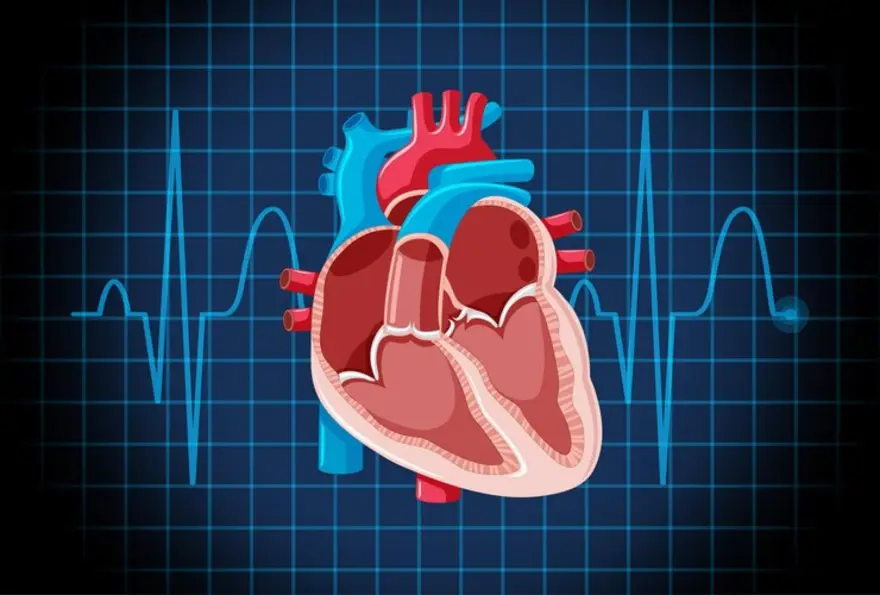foods to boost hemoglobin
Exploring Hemoglobin: Normal Range, Levels, Low Hemoglobin and More
Your body needs oxygen to function, and anyone with insufficient blood cells or red blood cells that do not function properly risks their body not getting enough oxygen supply. Without sufficient oxygen, the different parts of the body will not function properly, resulting in numerous health issues. Haemoglobin is a protein usually found in the red blood cells; they are iron-rich and allow the flow of oxygen to the body's other tissues through the blood. Although low levels of haemoglobin are a sure indicator of anaemia, higher than normal haemoglobin range indicates severe health conditions. Understanding haemoglobin range and what it means for your health is essential for anyone who wants to live a healthy lifestyle. What Is Haemoglobin? Haemoglobin is the protein present in the red blood cells responsible for transporting oxygen to the rest of the body. Each haemoglobin protein has four atoms of iron, meaning it can carry four oxygen molecules simultaneously. The haemoglobin then attaches itself to the red blood cells and delivers oxygen wherever the blood flows. As all the billions of cells in your body need oxygen to maintain and repair themselves, haemoglobin plays a significant role in maintaining your health. Haemoglobin is also why your red blood cells get a disc-like shape. This shape enables them to move swiftly within the blood vessels. How Is Your Haemoglobin Range Tested? A simple blood test, also called a haemoglobin test, assesses your haemoglobin levels. The lab technician will take your blood sample and then send it to the testing centre. It is part of the complete blood count (CBC) test. This is a reasonably risk-free test, although you may feel mild pain from the needle entry and slightly bruising near the spot. Dizziness is a rare side effect of the test, but it usually disappears quickly. Why Is a Haemoglobin Test Done? Although a haemoglobin test can be recommended for multiple reasons, they usually amount to one of these three reasons. To Diagnose a Condition This is one of the obvious uses of a haemoglobin test. It is usually prescribed if you experience fatigue, dizziness, shortness of breath or weakness. Most of these symptoms indicate conditions like anaemia, polycythemia or other conditions. Checking Your Overall Health Haemoglobin tests are part of the routine blood analysis you may carry out yearly. It comes under the complete blood count test and is primarily done to monitor your overall health and screen for emerging conditions like anaemia. To Keep Track of a Medical Condition Suppose you have an underlying medical condition such as polycythemia vera or anaemia. In that case, your doctor may suggest regular haemoglobin tests to monitor your condition and alter your treatment if needed. Normal Haemoglobin Range Your haemoglobin range depends on factors such as your age and gender. Here is what normal haemoglobin ranges look like. Infants: 11-18 Young children: 11.5-16.5 Adult male: 13-16.5 Adult females (not pregnant): 12-16 Adult female (pregnant): 11-16 Interpreting Your Results High Haemoglobin Range High haemoglobin levels may signify a rare blood disorder known as polycythemia. In this disorder, your body produces excess red blood cells, which makes your blood thicker than usual. Due to this, you are at a higher risk of developing clots, strokes and heart attacks. It is a serious lifelong condition, which may be fatal without correct treatment. Other causes of your results being near the higher haemoglobin range could be dehydration, living at higher altitudes and smoking. It could also indicate other severe conditions such as heart or lung diseases. Low Haemoglobin Range Lower levels of haemoglobin indicate that you may have anaemia. Anaemia is of different types, including the following: Iron-deficiency anaemia: This is one of the most common types of anaemia and usually occurs when you do not have enough iron in your body and cannot make the haemoglobin you need. Although it usually happens because your body may not absorb enough iron, it also can happen in cases of excessive blood loss. Pregnancy-related anaemia occurs as pregnancy and childbirth require significantly higher amounts of iron. Vitamin-deficiency anaemia: This kind of anaemia results from low nutrient levels such as folic acid or vitamin B12. Aplastic anaemia: In this disorder, your immune system destroys the blood-forming stem cells in the bone marrow, resulting in fewer red blood cells. Hemolytic anaemia: This type of anaemia can have a genetic origin or result from another condition. It is caused due to the breakup of red blood cells in the spleen or bloodstream. Sickle cell anaemia: Another genetic condition that occurs because of the abnormal haemoglobin protein that causes the blood cells to have a sickle shape stopping them from flowing through the smaller blood cells. Low Haemoglobin Levels in Infants There are chances that a newborn develops temporary anaemia around the age of 6 to 8 weeks. It is caused when the infant runs out of the RBCs they were born with and have not yet created their new cells. This condition has no adverse effects unless they have an underlying condition. It can also result from breaking down the blood cells too fast, resulting in the yellowing of the skin, known as jaundice. Once you have interpreted your results, your doctor may advise various treatment methods based on the cause of the anaemia. Most often, the treatment for anaemia will include a change in the diet or an addition of a dietary supplement that helps with iron or vitamin deficiency. Polycythemia is a lifelong condition that is not curable. However, medicines help manage the symptoms. Book Blood Test at Home In Summary Haemoglobin is a protein present in the red blood cells that helps transport oxygen through the blood. Higher than normal haemoglobin range is caused due to polycythemia, whereas lower than average haemoglobin usually results in anaemia. Keeping track of your haemoglobin levels is especially important for individuals with a history of anaemia or at risk. Metropolis Labs is one of the leading diagnostic centres in India. They provide customers with the convenience of at-home sample collection, so you do not need to step out of the house, especially when not well. Check out the different diagnostic tests they offer to find the ones that suit you best.
How to Increase Hemoglobin Levels Quickly: Foods & Natural Tips
Hemoglobin, an iron-rich protein found in the red blood cells, renders the red color to your blood. It is responsible for carrying oxygen and transporting it to all the parts of the body. In addition to transporting oxygen, it carries carbon dioxide away from the cells and to the lungs for expulsion. Basically, hemoglobin is a very important protein, crucial for leading a healthy life. What Happens When Your Hemoglobin is Low? Get a Complete Blood Count (CBC) Test and know if you could have anemia. A drop in the level of hemoglobin can make it difficult for the body organs to get enough oxygen, which can lead to a plethora of symptoms including fatigue, dizziness, headaches, shortness of breath, fast heart rate, pale skin, etc. Decreased levels of hemoglobin in blood is called anemia. Low hemoglobin level is quite common in India, especially in women. The normal level of hemoglobin required for adult men is around 14 to 18 g/dL and for adult women it’s 12 to 16 g/dL. Anything less than these levels can result in anemia. It is vitally important that adequate measures are taken to improve your hemoglobin levels. Your diet can play a significant role in the synthesis of hemoglobin and maintain an optimum level of hemoglobin. Listed Below are Top Hemoglobin Food Items That Help You Increase your Hemoglobin Levels: 1. Beetroot: Beetroot is enriched with natural iron, magnesium, copper, phosphorus, and vitamins B1, B2, B6, B12 and C. The wealth of nutrients in this wondrous vegetable helps in increasing the hemoglobin count and regeneration of red blood cells. It can be consumed raw as salad or in the cooked form. Alternatively, you can even blend it and prepare a glass of beetroot juice. 2. Moringa Leaves: Moringa leaves are rich in minerals like zinc, iron, copper, magnesium, vitamin A, B and C. Take a few finely chopped moringa leaves and make a paste, add a teaspoon of jaggery powder and blend well. Consume this churna regularly along with the breakfast to improve your hemoglobin level and red blood cells count. 3. Green Leafy Vegetables: Green vegetables to increase hemoglobin like spinach, mustard greens, celery, and broccoli are rich vegetarian sources of iron. It is advised to have cooked spinach as raw leaves contain oxalic acid which may prevent the absorption of iron in the body. This leafy green vegetable is a natural source of vitamin B12, folic acid, and other vital nutrients, and you should make it a staple part of your daily platter if you want to increase your hemoglobin. Broccoli is a rich source of iron and B-complex vitamin folic acid, and also contains a healthy amount of other essential nutrients like magnesium, vitamin A and C. Moreover, green veggies are low in calories and are good sources of dietary fiber. Hence, they can also help you in weight loss and improve digestion. 4. Dates, Raisins & Figs: Dates and raisins offer a combination of iron and Vitamin C. Figs, on the other hand, are packed with the goodness of iron, magnesium, vitamin A and folate. Consuming a handful of dried figs and raisins and two or three dates in the morning can provide you with instant energy and improve your hemoglobin levels. It is also recommended to have fig milk at bedtime twice a week to increase hemoglobin levels. Diabetics should take such dry fruits in moderation only. 5. Sesame Seeds: Eating black sesame seeds is another great way of increasing your iron intake as they are loaded with iron, calcium, magnesium, copper, zinc, selenium and vitamin B6, E and folate. You can soak them in some water and leave it overnight before consuming it the next morning. Mix about 1 tablespoon of dry roasted black sesame seeds with a teaspoon of honey and roll into a ball. Consume this nutritious ladoo regularly to Increase your iron levels. You can sprinkle some over your cereal or oatmeal or even yogurts and fruit salads. Other Tips to Increase Your Hemoglobin Levels at Home: Rely on Fruits: Apricots, apples, grapes, bananas, pomegranates and watermelons play a very important role in improving hemoglobin count. Apples are a delicious and suitable option when it comes to Increasing hemoglobin levels as they’re one of the most iron-rich fruits out there. Pomegranate is a rich source of both iron and calcium along with protein and fiber. Its nutritional value makes it a perfect source for people with low levels of hemoglobin. Add these fruits to increase hemoglobin to your bowl of cereal or oatmeal, or add them to your salads for a little sweetness, or put them in your milkshakes, smoothies or fruit juices. Consume food cooked in iron utensils: This is because an iron utensil fortifies your food with iron, making it potent for people suffering from low hemoglobin levels. Take help of Vitamin C Rich Foods: Include vitamin C in your diet as it helps your body to absorb iron more efficiently. Eat more gooseberry, oranges, lemon, sweet lime, strawberries, bell peppers, tomatoes, grapefruits, berries, as they are super rich in vitamin C. Make it a habit of consuming these natural sources of Vitamin C regularly. Avoid iron blockers: Cut down eating foods that hinder iron absorption in your body, especially if you have a low haemoglobin count. Limit the intake of haemoglobin foods rich in polyphenols, tannins, phytates and oxalic acid such as tea, coffee, cocoa, soy products, wine, beer, cola and aerated drinks. Opt for moderate to high intensity workouts: When you exercise, your body produces more hemoglobin to meet the increasing demand for oxygen throughout the body. Add supplements when needed: Some cases of low hemoglobin count can’t be fixed through diet alone. You may need to take oral iron supplements or additional treatments. Before you start taking an iron supplement, consult your doctor. Make sure to get your hemoglobin levels tested on a timely basis. This helps detect any lower levels well in advance and take appropriate measures.
 Home Visit
Home Visit Upload
Upload















 WhatsApp
WhatsApp